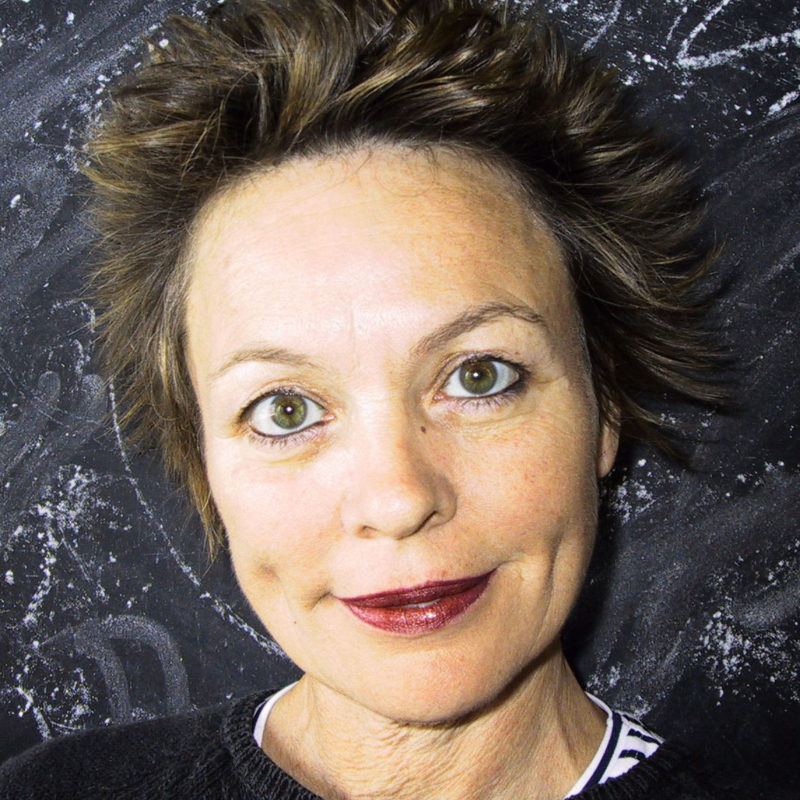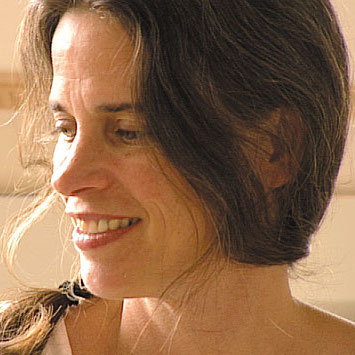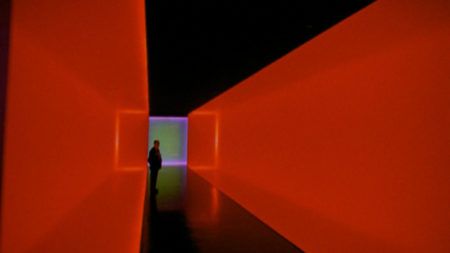Continue playing
(Time remaining: )
Play from beginning
Continue playing "{{ controller.videos[controller.getVideo(controller.currentVideo)].segmentParentTitle}}"
{{controller.videos[controller.getVideo(controller.currentVideo)].title}} has ended.
Place
“America is a country made of places,” writes curator Thelma Golden for the Art in the Twenty-First Century Companion Book, “not just the places marked by road signs and maps, but also the less tangible but no less meaningful places forged in the crucible of memory, longing and desire.” Place is shot on location in New York, New York; San Francisco, California; Lexington, Virginia; Philadelphia, Pennsylvania; San Juan, Puerto Rico; and Bilbao, Spain.
Credits
Created by: Susan Sollins & Susan Dowling. Executive Producer & Curator: Susan Sollins. Executive Producer: Susan Dowling. Series Producer: Eve-Laure Moros Ortega. Associate Producer: Migs Wright. Production Coordinator: Laura Recht. Researcher: Quinn Latimer & Wesley Miller. Director: Catherine Tatge. Editor: Donna Marino. Director of Photography: Bob Elfstrom & Joel Shapiro. Additional Photography: John Chater, Ken Kobland, & Don Lenzer. Sound: Gautam K. Choudhury, Ray Day, Doug Dunderdale, Aldo Ferraris Hierro, Chris Kellett, Ramon Larrabaster, Juan A. Torres, Bill Wander. Assistant Camera: Matthew Gordon, Brian Hwang, Paul Marbury, Glen Piegari, Enrique Puig, & Kipjaz Savoie. Gaffer/Grip: Ned Hallick, Paco Mayo, & Pedro Villalon. Location Manager: Asier Bilbao; Michelle Fernandez Echebarre; & Hilda Frontanes-Suarez, Tropical Visions. Production Assistant: Steve Carrillo, Graham Gangi, Brent Hamilton, Gabriel Monts, Eric Pfriender, Orlando A. Rivera, & Scott Stevens. Animation Stand Photographer: Marcos Levy & City Lights. Assistant Avid Editor: Heather Burak & Matt Prinzig. Assistant to the Director: Rachel Connolly.
Introductory Segment | Director & Writer: Laurie Anderson. Cast: Laurie Anderson. Director of Photography: Joey Forsyte. Gaffer: Peter Boynton, John Roche. Grip/Swing: Kit DiBenedetto, Patrick J. Webb. Make-up: Brooke Hunyady. Props: Heather Dunbar, Ali Goldman, & Zhanna Gurvich. Editor: Melody London. Assistant Editor: John Kim. Tai Chi Music by: Oliver Shanti & Friends.
Creative Consultant: Ed Sherin. Art Design and Direction: Open, New York. Animation, Visual Effects & Compositing: Spontaneous Combustion. On-Line Editor: Don Wyllie & Frame:Runner NYC. Composer: Peter Foley. Music Supervisor: John Yaffé. Sound Editing: Margaret Crimmins, Greg Smith, & Dog Bark Sound. Sound Mix: Tony Volante & Soundtrack, New York. Post-Production Supervisor: Michael Weingrad & Keir Randall.
Artworks courtesy of: Margaret Kilgallen; Sally Mann; Barry McGee; Pepón Osorio; Richard Serra; Bernice Steinbaum Gallery; Deitch Projects; Edwynn Houk Gallery; & Ronald Feldman Fine Arts. Archival footage of Barry McGee courtesy of: Thomas Campbell.
Special Thanks: Anne C. Baker; Alison Beall; City Lights; Silvia Karman Cubina; Susan Delson; Escuela de Artes Plasticas; Goldenberg Family; Russell Hassell; Jenni Holder; Instituto De Cultura Puertorriquena; Bruce Mac Corkindale; The Mann Family; Margarita Moreno; Museo de Arte Contemporaneo de Puerto Rico; Museo de Arte de Puerto Rico; Chris Pullman; Tina Rosario and family; Tamberelli Video; Tropical Visions; UCLA Hammer Museum; Virginia Museum of Fine Arts; Darin Webb
Interns: Maytal Ahrony, Joyce Alcantara, Christina Darcy, Leslie Fritz, Johanna Goldfeld, Susannah Gust, Sage Lehman, Kelly McCoy, Genevieve Mercatante, Jeff Seelbach, & Stacy Wu.
Public Relations: Kelly & Salerno Communications. Legal Counsel: Albert Gottesman.
Major underwriting for Season 1 of Art in the Twenty-First Century is provided by Robert Lehman Foundation, PBS, National Endowment for the Arts, Corporation for Public Broadcasting, Rockefeller Brothers Fund, Agnes Gund and Daniel Shapiro, The Allen Foundation for the Arts, The Broad Art Foundation, The Jon and Mary Shirley Foundation, Bagley Wright Fund, The Rockefeller Foundation, The Andy Warhol Foundation for the Visual Arts, The Horace W. Goldsmith Foundation, and The Foundation-to-Life.
Closed captionsAvailable in English, German, Romanian, Italian, Japanese, Korean, Chinese, Italian
Through the Art21 Translation Project, multilingual audiences from around the globe can contribute translations, making Art21 films more accessible worldwide.
Interested in showing this film in an exhibition or public screening? To license this video please visit Licensing & Reproduction.
Barry McGee was born in 1966 in San Francisco, California, where he currently lives and works. He received his BFA in painting and printmaking from the San Francisco Art Institute in 1991. Taking inspiration from his upbringing in the Bay Area, folk and craft art, Mexican Muralists, geometric abstraction, and cartoons, McGee’s work balances the formal concerns of fine art with populist representations and communal modes of working. In doing so, he creates a body of work that combines the disparate worlds of street art and fine art. Through his drawings, paintings, and mixed-media installations, the artist creates a visual lexicon that addresses the struggles of contemporary urban life, looking toward his local community while building a world of his own characters, monikers, and motifs.
Laurie Anderson creates large-scale theatrical works that combine a variety of media—music, video, storytelling, projected imagery, sculpture—in which she is an electrifying performer. As a visual artist, her work has been shown at the Guggenheim Museum, SoHo; as well as extensively in Europe, including the Centre Georges Pompidou in Paris. She has also released seven albums for Warner Brothers, including Big Science, featuring the song “O Superman,” which rose to number 2 on the British pop charts. In 1999, she staged Songs and Stories From Moby Dick, an interpretation of Herman Melville’s 1851 novel. She lives in New York.
Margaret Kilgallen was born in 1967 in Washington, D.C., and received her BA in printmaking from Colorado College in 1989. Shortly afterward, the artist moved to San Francisco, where she took up surfing and immersed herself in the Mission District street scene. Kilgallen was influenced by the hand-painted signs and colorful murals she saw while biking around her Mission District neighborhood. Additionally, her early experiences as a librarian and bookbinder in the San Francisco Public Library helped the artist develop an encyclopedic knowledge of American folk signs, printmaking, and letterforms. Working on found and salvaged material and graffiti, Kilgallen created works that highlighted the beauty of everyday life.
Pepón Osorio was born in 1955 in Santurce, Puerto Rico, and currently lives and works in Philadelphia, Pennsylvania. In 1975, Osorio left Puerto Rico and moved to the South Bronx in New York City, where he received a degree in sociology from Lehmann College and began working as a social worker in the Human Resources Administration. He later received an MA in sociology from Columbia University in 1985. Influenced by his experiences as a social worker in The Bronx, Osorio builds a participatory model of art that reflects the lives and stories of his communuities. Through his installations and sculptures, the artist calls attention to issues of race, violence, and gender prevalent in the Latinx community.
Richard Serra was born in 1938 in San Francisco, California. He graduated from the University of California, Santa Barbara with a BA in English Literature in 1961, working at different steel mills to support himself during college. The artist later went on to receive a BFA in 1962 and an MFA in 1964, both from Yale University. In his work, Serra investigated the relationship between space, material, and movement. Through large-scale sculptures and site-specific installations, the artist manipulated mediums such as lead and steel to construct immersive geometric artworks that emphasize materiality and the relationship between the viewer and the spaces in which his works are installed.
Sally Mann was born in 1951 in Lexington, Virginia, where she currently lives and works. She graduated from Hollins College where she received her BA in 1974 and her MA in 1975. Best known for her black-and-white photography, Mann looks to her surroundings for inspiration. Whether documenting the everyday activities of her children or the beauty of the American landscape, Mann’s photographs, ethereal and haunting, touch on themes of loss, intimacy, freedom, and innocence.
“Most of the work that I do as an artist, whether it’s music, or images or a story, begins with a place.”
Laurie Anderson







